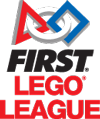
Despite multiple patent expirations, including the standard 2 x 4 LEGO brick (pictured), LEGO continues to dominate the toy industry.
Everybody seems to love LEGO, but what makes the little plastic bricks so special? The standard LEGO brick’s patent expired years ago and an abundance of copycat brands and Chinese knockoffs run amok in the global marketplace.
Despite expired patent protection, LEGO handily wins over the hearts, minds and pocketbooks of fans around the world. LEGO devotees don’t crave just any interlocking bricks. In many cases, it’s LEGO or nothing. The result? LEGO now reigns supreme in not only the toy construction industry, but in the entire toy industry as a whole. That’s right, in 2014 LEGO dethroned toy giant Mattel (maker of Barbie, Hot Wheels and Fisher-Price products), becoming the largest toy company in the world. Let’s examine five key reasons for LEGO’s growth and continued success.
1. Licensing: From Middle Earth and Hogwarts to A Galaxy Far, Far Away
Lucrative licensing deals with popular media franchises like Star Wars, Harry Potter, Toy Story, Lord of the Rings, etc. have allowed LEGO to edge out competition and win over new customers and fan bases. For example, the LEGO Star Wars line attracts Star Wars fans who may have never previously collected LEGO products. In turn, the Star Wars LEGO products may serve as a gateway into other LEGO product lines as well.
2. STEM Education and LEGO: Technic and Mindstorms Robotics
You’d be hard pressed to survive a week or even a day without hearing an American politician, educator or news outlet discussing the importance of Science Technology Engineering and Math (STEM) education in the future success of the United States.
For decades, standard LEGO bricks and sets have been touted as valuable educational toys since children must assemble the LEGO set themselves and interchangeable pieces empower builders to customize and construct their own homespun creations as well.
More recently, LEGO has grown beyond bricks into Mindstorms, a robotics system of programmable software and customizable hardware. LEGO robotics classes and clubs have sprung up around in schools around the world, ranging from elementary school level projects all the way up to university level and beyond. The FIRST LEGO League, an international LEGO robotics competition, attracted 23,748 teams in 2013-2014.
3. “Only the best is good enough”: Perceived quality, durability and interchangibility
What are some of the first words that come to mind when you think of LEGO? “Expensive” often ranks near the top of the list, but so do the terms “high quality” and “durable”. Mega Bloks, Best Lock and other LEGO competitors generally try to differentiate themselves from LEGO with lower price points, but lack the perceived quality and durability of the LEGO brand.

LEGO Star Wars The Force Awakens trailer screenshot (Top) comparison to real life LEGO pieces (Bottom). Incidentally, the banana is also a real life LEGO piece.
4. It’s not just about the bricks: The LEGO Company’s expansion into movies, TV shows, video games, and other media
LEGO’s expansion into movies, TV shows and video games simultaneously diversifies the company’s profit stream while reinforcing the brand image and stimulating toy sales. Put simply, the popularity of the toys fuel the media productions and the media productions fuel toy sales.
The media productions utilize a unique “LEGO logic” that differentiate the LEGO World from the real world. For example, in the LEGO Star Wars The Force Awakens video game, a player will build objects out of LEGO pieces during gameplay. Ships don’t collapse into rubble, like they would in the real world, but rather they collapse into a heap of LEGO bricks, plates, tiles, radar dishes, etc. Much of the premise of the blockbuster hit The LEGO Movie centered around characters building objects and vehicles, often modifying the vehicle while it is in motion.
“LEGO logic” is also often used to a humorous effect, like putting a LEGO banana into the stormtrooper’s hand, as shown in the photo above.
5. Generational Loyalty and Family LEGOcy
LEGO has developed into a family tradition that parents can pass down to their children and grandchildren. That warm fuzzy feeling of passing your childhood storage bin of LEGO pieces down to the next generation converts into increased brand loyalty and profits.
Unlike many other toys, LEGO, as a common family tradition, fuels excitement in both parents and kids alike. In other words, kids get excited about LEGO and parents get excited about buying LEGO for their kids. In some case, buying LEGO for their kids reignites a mom or dad’s own interest in collecting or building LEGO projects!
* * *
LEGO remains popular and profitable for many reasons beyond the five mentioned here. Can you think of any that we missed?
Further Reading:
Davidson, Jacob. “Lego Is Now The Largest Toy Company In The World.” Time. Time, 4 Sept. 2014. Web. 16 June 2016.

